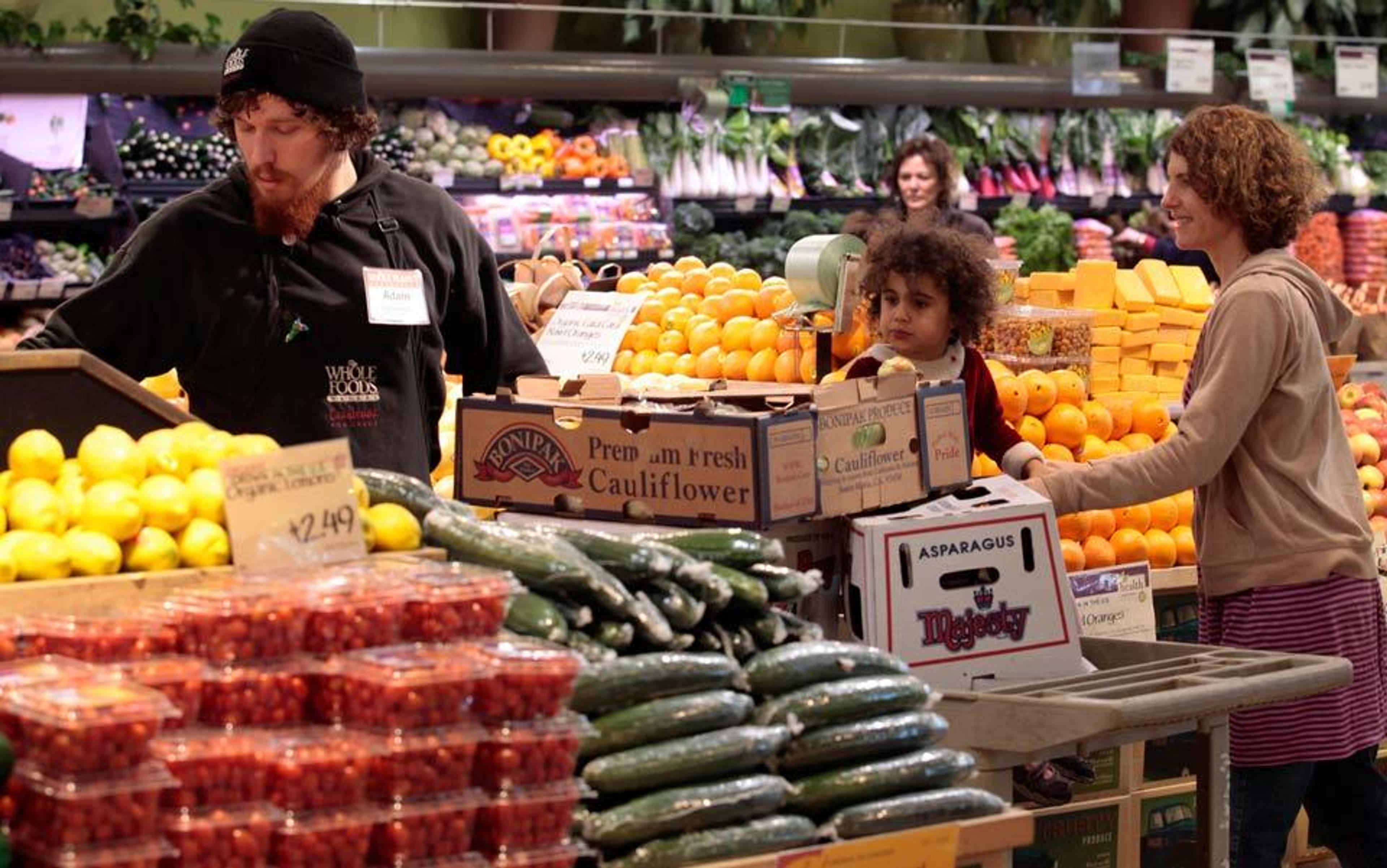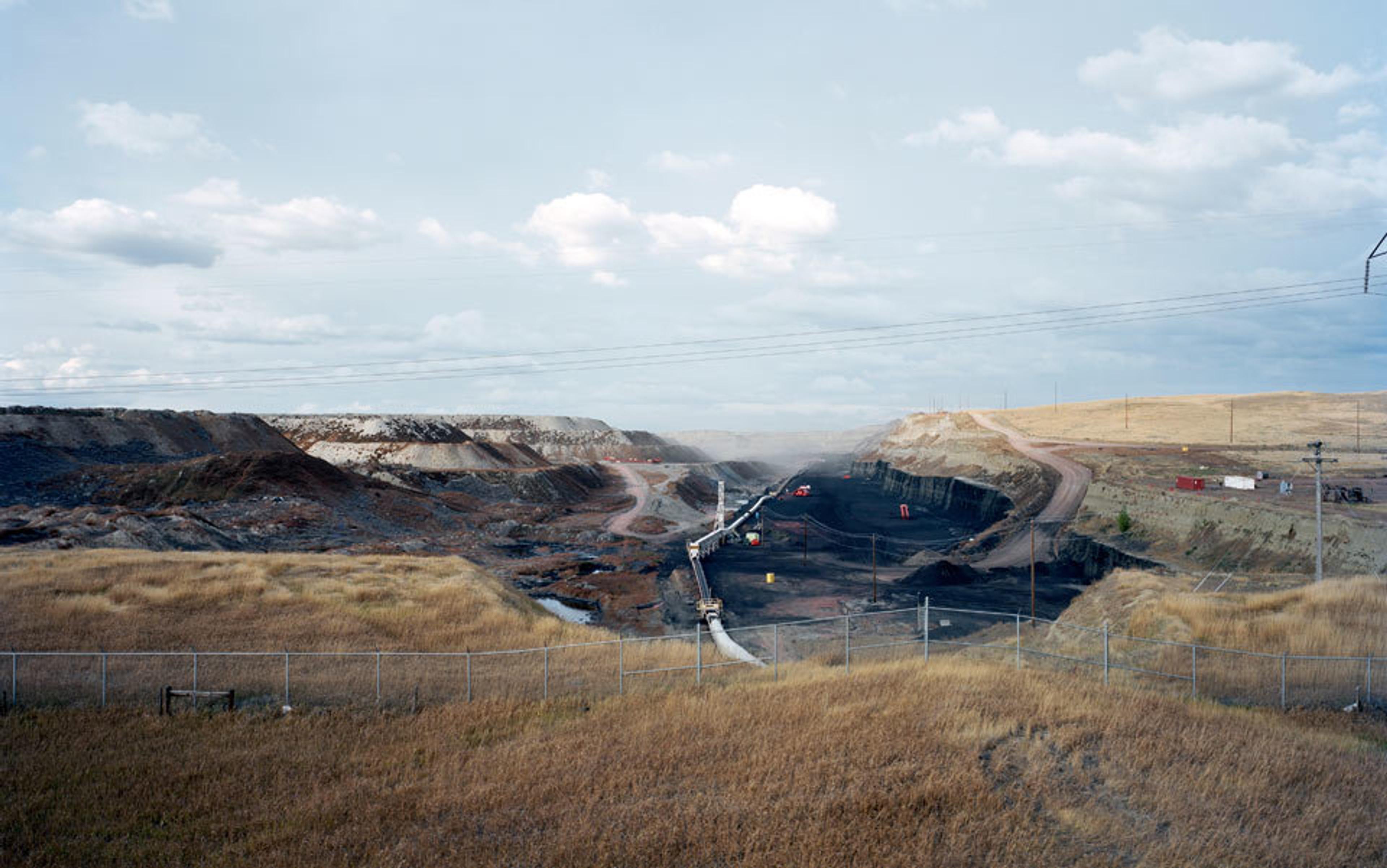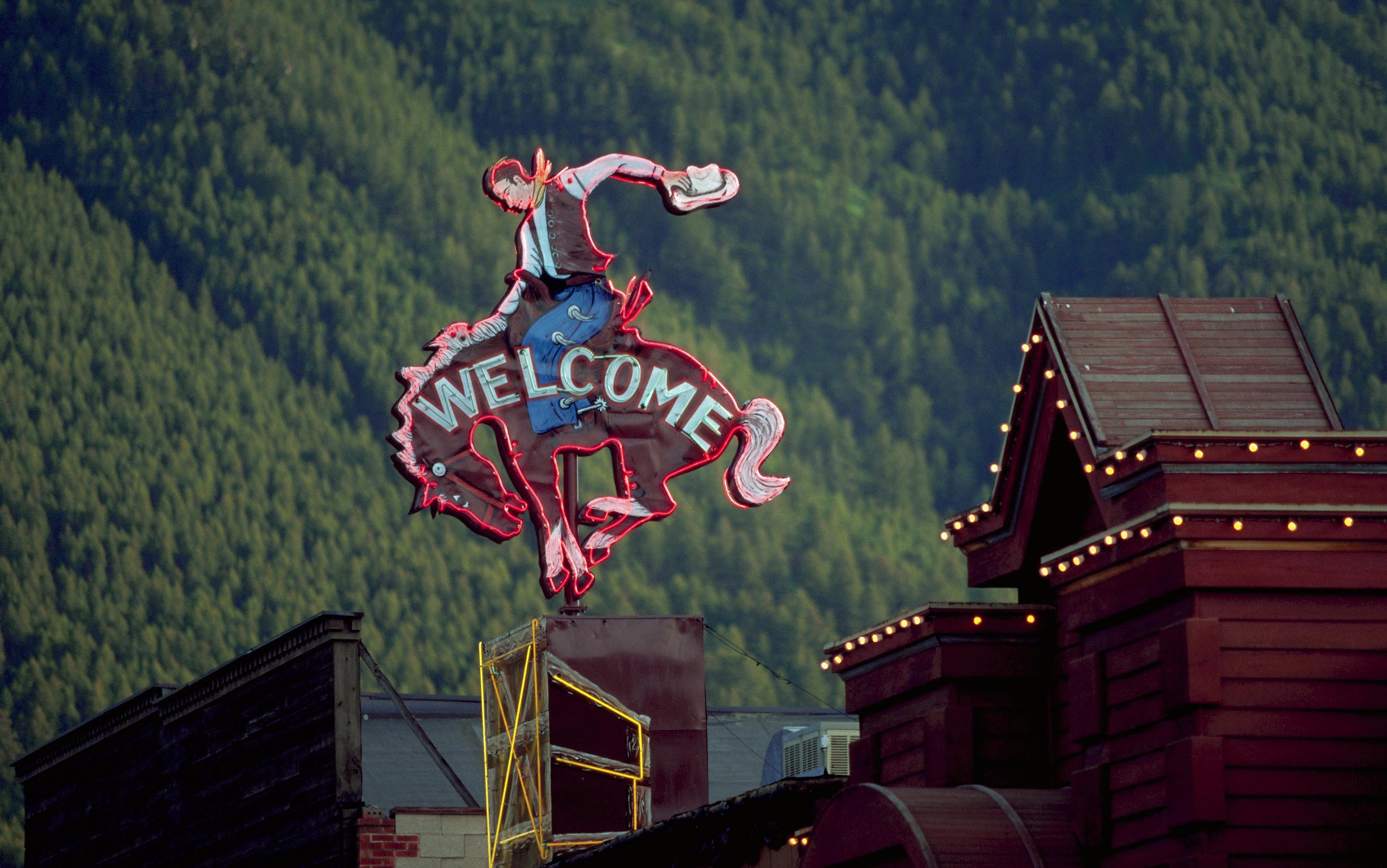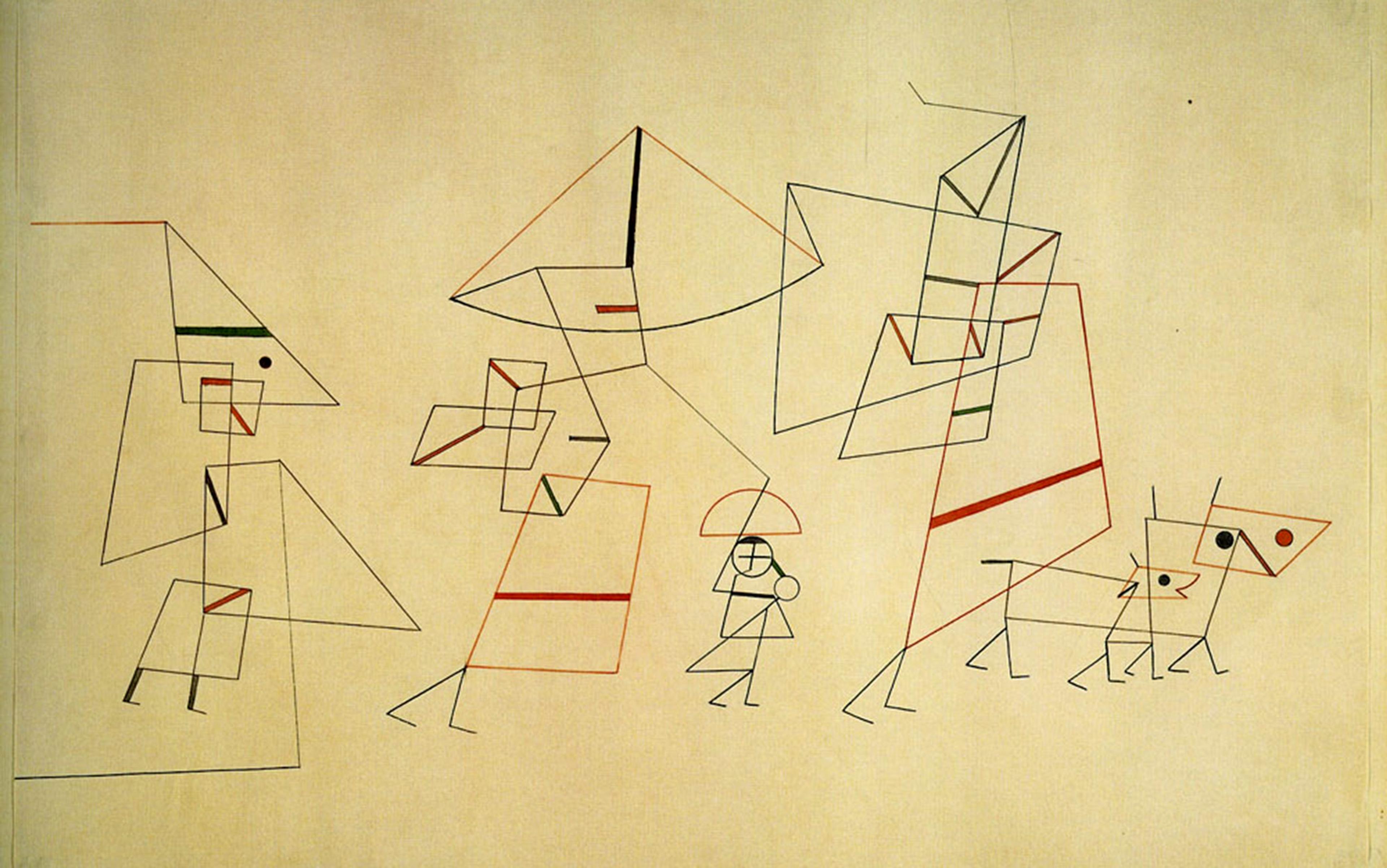Every time you set foot in a Whole Foods store, you are stepping into one of the most carefully designed consumer experiences on the planet. Produce is stacked into black bins in order to accentuate its colour and freshness. Sale items peek out from custom-made crates, distressed to look as though they’ve just fallen off a farmer’s truck. Every detail in the store, from the font on a sign to a countertop’s wood finish, is designed to make you feel like you’re in a country market. Most of us take these faux-bucolic flourishes for granted, but shopping wasn’t always this way.
George Gilman’s early A&P stores are the spiritual ancestors of the Whole Foods experience. If you were a native of small-town America in the 1860s, walking into one of Gilman’s A&P stores was a serious culture shock. You would have stared agog at gaslit signage, advertising, tea in branded packages, and a cashier’s station shaped like a Chinese pagoda. You would have been forced to wrap your head around the idea of mail-order purchases.
Before Gilman, pre-industrial consumption was largely the unscripted consequence of localised, small-scale patterns of production. With the advent of A&P stores, consumerism began its 150-year journey from real farmers’ markets in small towns to fake farmers’ markets inside metropolitan grocery stores. Through the course of that journey, retailing would discover its natural psychological purpose: transforming the output of industrial-scale production into the human-scale experience we call shopping.
Gilman anticipated, by some 30 years, the fundamental contours of industrial-age selling. Both the high-end faux-naturalism of Whole Foods and the budget industrial starkness of Costco have their origins in the original A&P retail experience. The modern system of retail pioneered by Gilman — distant large-scale production facilities coupled with local human-scale consumption environments — was the first piece of what I’ve come to think of as the ‘American cloud’: the vast industrial back end of our lives that we access via a theatre of manufactured experiences. If distant tea and coffee plantations were the first modern clouds, A&P stores and mail-order catalogues were the first browsers and apps.

In the summer of 2011, I found myself in Omaha, Nebraska, a major gateway to the American cloud, having a surreal conversation over lunch with Gary, a software engineer, and Harpreet, a topologist.
Theirs is a calling I could not make up if I tried: maintaining Smalltalk applications for Northern Natural Gas, which operates a sprawling 14,000-mile network of pipelines across the Midwest. Smalltalk, something of an indie darling among programming languages, is to mainstream languages such as Java what J R R Tolkien’s Elvish is to English. You don’t actually expect to encounter it in real life, let alone in the context of critical production infrastructure, any more than you expect to hear Elvish spoken in Congressional debates.
The Hamiltonian makeover turned the isolationist, small-farmer America of Jefferson’s dreams into the epicentre of the technology-driven, planet-hacking project that we call globalisation
But that is the sort of unexpected juxtaposition you routinely encounter when you explore the interior of the American cloud. It is a world as counterintuitive as shopping at Whole Foods is intuitive. It’s a space where naked technological realities accumulate behind the scenes in order to enable American life.
The massive datacentres that have recently retreated into the heartland of the US are merely the latest additions to this orchestra of scaled technologies. Together, these systems constitute a single, intricately interconnected entity, woven from a thousand particular technologies that have made the long journey from garage to grid.
I had come to Omaha to explore the American cloud, having succumbed to the Tocquevillean conceit, peculiar to the foreign-born, that one can read America by travelling through it. And so, here I was, discussing continent-spanning infrastructure with hyper-specialised geeks, in a region we romantically associate with the homesteading generalists of historic small-town America. At least in Omaha, such incongruities are readily apparent. In coastal America, where schoolchildren sometimes botch math problems about milk production because they assume a five-day week for cows, the incongruities are masked by the theatre of the shopping experience. But in reality, the cosy coastal world of simulated farmers’ markets and happy cows bears no resemblance to the actual back end of America.
The American cloud is the product of a national makeover that started in 1791 with Alexander Hamilton’s American School of economics — a developmental vision of strong national institutions and protectionist policies designed to shelter a young, industrialising nation from British dominance. Hamilton’s vision was diametrically opposed to Thomas Jefferson’s competing vision based on small-town, small-scale agrarian economics. Indeed, the story of America is, in many ways, the story of how Hamilton’s vision came to prevail over Jefferson’s.
By the early 19th century, Hamilton’s ideas had crystallised into two complementary doctrines, both known as the ‘American system’. The first was senator Henry Clay’s economic doctrine, based on protectionist tariffs, a national bank, and ongoing internal infrastructure improvements. The second was the technological doctrine of precision manufacturing based on interchangeable parts, which emerged around Springfield and Harpers Ferry national armouries. Together, the two systems would catalyse the emergence of an industrial back end in the country’s heartland, and the establishment of a consumer middle class on the urbanising coasts. But it would take another century, and the development of the internet, for the American cloud to retreat almost entirely from view.
By the 1880s, the two American systems had given rise to a virtuous cycle of accelerating development, with emerging corporations and developing national infrastructure feeding off each other. The result was the first large-scale industrial base: a world of ambitious infrastructure projects, giant corporations and arcane political structures. Small farms gave way to transcontinental railroads, giant dams, Standard Oil and US Steel. The most consequential political activity retreated into complex new governance institutions that few ordinary citizens understood, such as the Interstate Commerce Commission, the Federal Reserve, and the War Industries Board. Politics began to acquire its surreal modern focus on broadly comprehensible sideshows.
Your Kindle is a product, a store, a shopping cart, and a payment system all rolled together
Over the course of two centuries, the Hamiltonian makeover turned the isolationist, small-farmer America of Jefferson’s dreams into the epicentre of the technology-driven, planet-hacking project that we call globalisation. The visible signs of the makeover — I call them Hamiltonian cathedrals — are unprepossessing. Viewed from planes or interstate highways, grain silos, power plants, mines, landfills and railroad yards cannot compete visually with big sky and vast prairie. Nevertheless, the Hamiltonian makeover emptied out and transformed the interior of America into a technology-dominated space that still deserves the name heartland. Except that now the heart is an artificial one.
The makeover has been so psychologically disruptive that during the past century, the bulk of America’s cultural resources have been devoted to obscuring the realities of the cloud with simpler, more emotionally satisfying illusions. These constitute a theatre of pre-industrial community life primarily inspired, ironically enough, by Jefferson’s small-town visions. This theatre, which forms the backdrop of consumer lifestyles, can be found today inside every Whole Foods, Starbucks and mall in America. I call it the Jeffersonian bazaar.
Structurally then, the American cloud is an assemblage of interconnected Hamiltonian cathedrals, artfully concealed behind a Jeffersonian bazaar. The spatial structure of this American edifice is surprisingly simple: a bicoastal surface that is mostly human-habitable bazaar, and a heartland that is mostly highly automated infrastructure cathedrals. In this world, the bazaars are the interiors of cities, forming a user-interface layer over the complex tangle of pipes, cables, dumpsters and loading docks that engineers call the last mile — the part that actually reaches the customer. The cities themselves are cathedrals crafted for human habitation out of steel and concrete. The bazaar is merely a thin fiction lining it. Between the two worlds there is a veil of manufactured normalcy — a studiously maintained aura of the small-town Jeffersonian ideal.
To walk into Whole Foods is to recognise that the Jeffersonian bazaar exists in the interstices of the cloud rather than outside of it. Particular clouds might have insides and outsides — smartphone apps live outside, datacentres live inside; gas stations live outside, oil supertankers live inside — but the cloud as a whole has no meaningful human-inhabited outside. It subsumes bicoastal America rather than being book-ended by it.
Between the first supermarket chains that replaced small-town grocers, and Whole Foods, the special effects have improved but what we inhabit is still recognisably a simulacrum of a Jeffersonian past, not the real thing. To pierce the veil, all you need to do is wander around to the loading docks. The Jeffersonian bazaar is no seamless matrix.
The modern megacity is arguably the most impressive Hamiltonian cathedral of all, not just because of its scale and complexity, but because it manages to fool us into thinking it is merely a scaled-up small town. We are only now beginning to appreciate just how qualitatively different the modern metropolis is from the village, town or small city. For bicoastal Americans, these megacities are the only Hamiltonian cathedrals they ever see up close, during landings and take-offs. Their flight paths over flyover country are far too high for them to see much else.
The veil of manufactured normalcy exists in the workplace as well, but it is necessarily thinner
While few Americans see much of Hamiltonian America, they do interact with it extensively, through two distinct interfaces. The first interface connects us to the Hamiltonian world’s core abstractions: the firm, the market and the law, identified as the central abstractions of modern life by the economist du jour Ronald Coase. The mediating objects of this interface are transactional instruments: dollars, votes, contracts, patents, judicial precedents.
The second interface connects us to the Hamiltonian cathedrals themselves. The mediating objects here are the metaphor-laden user-experience widgets of everyday life: buttons, shopping carts, light switches, steering wheels, faucets, flush-handles, and trash cans.
Some of our behaviours, such as signing up for direct deposit of paychecks, paying with credit cards, scanning bar codes, and accepting Terms of Service agreements on websites, involve primarily the first interface. Others, such as shopping, using gas stoves, boarding planes or watching television, involve primarily the second. Modern technologies — think check-ins, coupons, in-app purchases, gamified interactions, and star ratings in your favourite app — weave both interfaces into one. Your Kindle is a product, a store, a shopping cart, and a payment system all rolled together.
Like A&P’s George Gillman before them, modern marketers must synthesise a narrative out of thousands of instrumental interactions with distant artificial realities, humanising them for incorporation into the Jeffersonian bazaar. The process is not cheap, which explains why Whole Foods offers a far more compelling bazaar illusion than Costco. Those who want a more seamless illusion must pay more.
The heartland’s Hamiltonian cathedrals are bare-metal techno-cultural spaces. By contrast, the Jeffersonian bazaar is, to a first approximation, a purely cultural space where we can remain human in some unreconstructed, romantic sense of the word. It’s a space within which we strive to render technology invisible to our appreciative senses, while retaining its instrumental capacities. These two interfaces, the conceptual and the metaphoric, both connect us to, and separate us from, the large-scale systems that provision our lives, allowing us to have our technological cake and eat it, too.
A touch of humour or irony is sufficient to satisfy even the most refined hipster sensibilities
And so this is how we inhabit the American cloud in the modern age. We finance the Jeffersonian consumption of our evenings and weekends through participation in Hamiltonian production models during our weekdays. Of course, the veil of manufactured normalcy exists in the workplace as well, but it is necessarily thinner. And increasingly, for those information and service workers who live in the coffee shops at the heart of the bazaar, there is no need to go there anyway.
With each passing year, the Jeffersonian pastoral simulation acquires more precision and refinement, if not historical accuracy. In The Theory of the Leisure Class (1899), the economist Thorstein Veblen described the birth of this artifice in the form of the pastoralised estates of the rich. Today, we are observing the completion of the process and its gradual extension to the non-rich. Even among the poor, visceral encounters with back-end realities like pink slime are vanishingly rare. The arms race between technological forces drawing us out of Eden, and the normalisation forces striving to return us to a simulation of it, is entering its end-game.
Of course, we are not entirely unaware of the factory-farming world of food processing firms such as Tyson Fresh Meats and Cargill Foods. We have a dim awareness that our civilisation runs on undocumented Mexican labour, not to mention seven-day weeks for cows and packed feedlots. This is perhaps why the 2013 Superbowl commercial for a Ram pickup truck — a cynical and anachronistic homage to small farmers set to a 1978 speech entitled ‘So God Made a Farmer’ — offended so many viewers, including many who know little about the reality of factory farming. The narrative was just a little too tasteless to be accepted into the Jeffersonian bazaar.
Yet when presented with just a bit more taste, we swallow such narratives without much questioning. A touch of humour or irony is sufficient to satisfy even the most refined hipster sensibilities. We do not require our marketing narratives to be true. We merely require them to convince us of our own sophistication.
Pop culture plays an important role in the concealment of Hamiltonian realities. Patterns of life in the Jeffersonian bazaar are still derived, via layers of metaphor and symbolism, from pre-industrial realities. But since the illusion is not perfect, we require actors on television to complete the interpretation for us, mediating our relationships to the theatres we inhabit. As a result, American pop culture retains long-term memories of Jeffersonian historical epochs, endlessly repurposing the archetypes of those human-scale eras into contemporary stories. By contrast, Hamiltonian epochs quickly fade from collective memory.
Periods of technological equilibrium are punctuated by periods of rapid change, creating technological epochs
The brief story of the HBO series Deadwood (2004-06), a western set in the 1870s showcasing a Jeffersonian local polity of gunslingers and prospectors, is now classic television. Tourists still swarm to the real town of Deadwood, South Dakota, making their way from Wild Bill Hickok’s grave site to the patch of kitschy Americana that is its modern downtown. But few venture the three miles to Lead, home to the Homestake Mining Company, founded by the villain of the Deadwood TV series, George Hearst. The mine continued to produce gold for shareholders until 2002, but did not merit its own TV show.
I was no exception. Having made my way west from Omaha to Deadwood via North Platte, home to Union Pacific’s Bailey Yard — the largest railroad classification yard in the world — I too decided to skip Lead, and headed instead towards Cody, Wyoming. Cody was home to Buffalo Bill Cody, who transformed the tragedy of Wild Bill Hickok’s West into the farce of Buffalo Bill’s Wild West shows of the 1880s and beyond — one of the first major pieces of theatre to be incorporated into the fledgling Jeffersonian bazaar.

Life in the bicoastal Jeffersonian bazaar simply does not prepare you for the sights, sounds and proportions of the Hamiltonian heartland. On the way west to Cody, drawn by the sight of a power plant that loomed menacingly through rain and mist above Interstate 90, I stopped in Gillette, Wyoming, a town of fewer than 29,000 people that bills itself the ‘energy capital of the nation’.
Having got lost trying to find my way to the power plant, I ended up at a public viewing area overlooking the Eagle Butte coal mine seven miles out of town. The viewing area features a massive excavator bucket and a tire taller than most humans. A single tire used in mining, I later discovered, can cost $40,000-$70,000. A full set can cost more than an inexpensive home. Contemplating giant tires is one way to appreciate that you have entered a different world.
The Hamiltonian heartland is a land of Brobdingnagian and Lilliputian proportions. It is a land of cryptic and inaudible conversations between radio-frequency ID scanners and passing railroad cars, and records too numerous for the Guinness Book to track. It is also a land of millions upon millions of serial numbers: on doors, pieces of equipment, cowlings, pipes, pylons, and an ocean of smaller technological artefacts so vast that, in economics classrooms, they have to be collectively obscured under the label widgets.
If the proportions of the Hamiltonian heartland defy our spatial intuitions, its pace of evolution defies our temporal intuitions. In the time it takes for the heartland to change significantly — 50 to 70 years on average, in the case of major technologies such as the railroad — human-scale heroes typically grow old and die. But change does occur. Periods of technological equilibrium are punctuated by periods of rapid change, creating technological epochs. Each such epoch creates a new layer of visible changes in the Hamiltonian heartland, and corresponding changes in institutions.
These epochs are defined by their abundances and scarcities. Over the past half century, we’ve been learning how to stop wasting oil and how to start ‘wasting bits’, as Alan Kay, one of the inventors of Smalltalk, put it in the 1970s. That knowledge is now transforming the heartland.
From the Smalltalk-speaking computers of Northern Natural Gas to the Union Pacific control room operating the gigantic railroad switchboard that is Bailey Yard, to the missile silos dotting the badlands of South Dakota, our Hamiltonian heartland is being slowly transformed by software and energy-efficiency technologies.
We’ve gone from neighbourhood farms to five-day cows to a world where horsemeat and beef can get accidentally mixed up in the meat cloud
But while large-scale shifts can create drastic changes, they are not clean breaks from the past. Every shift also leaves a good deal unchanged. We can detect major shifts when Hamiltonian cathedrals move or transform at the bare-metal level. The rise of steam, for instance, led to a gradual drift of factories away from water power sources, and the decline of mill towns. It also triggered a simplification in the internal structure of factories, as the belts and pulleys that linked the machines to the mill vanished, to be replaced first by steam engines and pipes, and eventually by wiring and electric motors. It was a shift similar to the one from mainframe to personal computing.
Once a Hamiltonian technological layer settles, its Jeffersonian interfaces also settle. Firms, markets and the law stabilise, the physical last mile hardens, and the little patch of interaction metaphor in your living room becomes familiar. For a while, there is peace. We buy our iPhones, trade somnolent stocks for more exciting ones, acquire new instrumental skills for production and consumption, and swarm into new patterns of life and work.
With each new technological layer, and each evolution of Jeffersonian interfaces, more Hamiltonian realities recede into the cloud. Serial numbers, perhaps the most resistant traces of Hamiltonian realities within the Jeffersonian bazaar, are finally succumbing. We no longer remember any telephone numbers besides our own. IP addresses have given way to domain names. And even those are vanishing into the memories of apps.
This process of retreat is not new. We’ve gone from neighbourhood farms to five-day cows to a world where horsemeat and beef can get accidentally mixed up in the meat cloud. But the retreat of numbers completes the veil in a deep way. ‘Software is eating the world,’ as Netscape’s co-founder Marc Andreessen put it in The Wall Street Journal in 2011, allowing us to seal the last reality leaks.
Our metaphors struggle to keep up not just with changing realities, but the growing intricacy of the interfaces to those realities. The metaphor of a passive and translucent veil separating the human and technological worlds has been transformed into the actuality of skeumorphic linings obscuring bare metal. Today’s city dwellers rarely realise just how much steel surrounds them wherever they go. The interfaces have thickened and acquired intelligence in proportion to our desire to manipulate Hamiltonian reality.
To the Jeffersonian sensibility, Hamiltonian cathedrals are often little more than infrastructure porn. But to establish a direct, appreciative relationship with these technologies, unmediated by instrumental metaphors and currencies of interaction, you have to walk among them yourself. You have to experience train yards, landfills, radio-frequency ID-tagged seven-day cows and other such backstage oddities in the flesh.
Thomas Edison thought the gramophone would be primarily used as a dictaphone; instead, it revolutionised music
But it is not sufficient to simply get into a car and drive into flyover country. You need a literate — and literary — perspective, to appreciate what you see, since there are no marketers around to do the work for you.
My own perspective is something like an ironic religion of technological mindfulness, one whose central perceptual act is the projection of a cryptic agency onto the whole that is neither malevolent, nor benevolent, but merely something to be decrypted.
In this act of ritual decryption, it is useful to begin with the assumption that decrypted realities are unlikely to revolve around human concerns. The technological might have originated in the human, but its essence is neither human nor transhuman. It is simply non-human. There is no necessary relationship between what technology does and what humans want. Thomas Edison thought the gramophone would be primarily used as a dictaphone; instead, it revolutionised music. Lee De Forest thought the ‘wireless’ would take high culture to the masses; instead, it created popular music forms that ended up marginalising classical music. The internet was conceived as a communication system that could survive nuclear war; today we use it to trade kitten pictures.
For me, the ritual pilgrimage into the heartland is an opportunity to reconnect not with the bare-metal cloud in the abstract, but with a thousand particular clouds, each with its own visible motif. Sometimes we can name the motifs that attract our unsupervised attention: pylon, container, landfill ventilation pipe, big tire. Other times, we can only pause and remark to ourselves: ‘That’s an interesting-looking widget. I wonder what it’s for?’
My pilgrimage into the Hamiltonian heartland ended in Gillette. After contemplating the giant $40,000 tire, I managed to find my way to the power plant that had tempted me off the highway. It turned out to be the Wyodak steam-electric plant, ‘America’s largest air-cooled power plant’.
From Gillette, I made my way to Cody, and on through Yellowstone National Park to the home of a wealthy friend in Jackson Hole, perhaps the most complete Jeffersonian bazaar in America — a Whole Foodsian Eden so flawless that only the seriously rich can afford to live there. Someday, technological utopians hope, we might all be able to live somewhere like Jackson Hole. That is, if our Hamiltonian cathedrals don’t come crashing down on us first.






